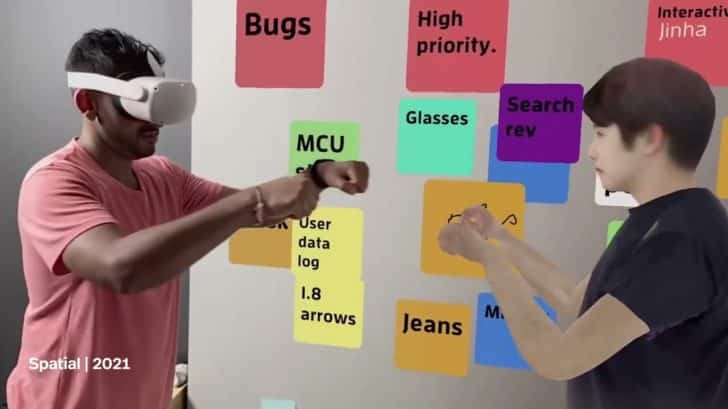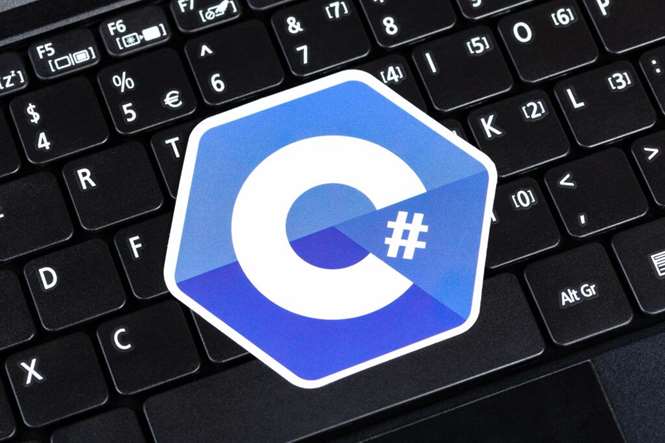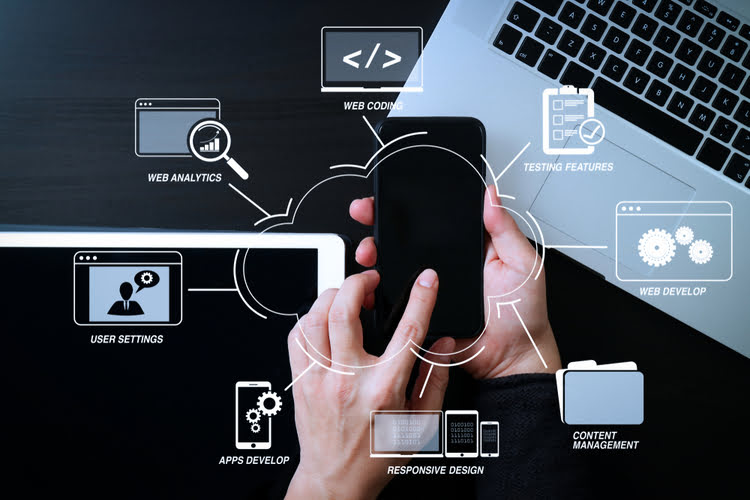You would think its science fiction or the magic of visual effects if somebody told you that you can bring your ideas in the world with a few spoken words and a wave of your hand. It’s not just Robert Downey Jr. in Avengers swiping, pulling, and pushing digital interfaces within the air to plan a plan to defeat Thanos. It can also be one of the essential examples of a profitable spatial computing implementation as a end result of the market has modified. Today, prospects anticipate the ordered goods to reach the subsequent day and that they don’t have to wait for days.
You see, contact, move, and communicate aloud if you want a specific action to be performed. Spatial computing allows the human-computer interaction to take place the identical means you’d work together with objects in your actual world. The know-how that will enable you to merge computer systems into your real-world is called spatial computing. It is actually how we are more and more stepping inside the world of computer systems, somewhat than just interacting with them from a distance. It’s an oldie however a goodie— There’s something very punk rock DIY about the MoMAR concept— a gaggle of artists leveraging augmented reality to overlay digital artwork onto conventional artworks in galleries. The idea challenges the notion of what art is and pokes fun on the elitism of the nice artwork world.
Top 5 Apple Vision Pro Improvement Corporations
Spatial computing is a helpful time period, but so is augmented actuality, blended actuality, and digital reality, all three of which are part of our historical past and tradition. The aim of an e-commerce website is, ideally, to sell products, they usually do that by simulating actual life buying experiences online. We add products to a virtual ‘cart’ and nearly go to the ‘checkout.’ The actuality is, although, that there’s still a huge gap between real-world touch and really feel experiences speaking to a salesman and online buying. This is changing.From immersive experiences, viewing a rug in your room or a hologram of your self sized with these new denims, the effect of spatial computing in reshaping the e-commerce experience shall be massive.
Remote work opened doors to new lifestyles beforehand incompatible with conventional workplace life, such as digital nomadism and energetic parenting. However, it also made evident that video chat platforms like Zoom don’t absolutely fulfill the necessity for artistic and efficient collaboration in a remote setting. Virtual Reality (VR) is a expertise that totally immerses customers in a digital, three-dimensional setting, enabling them to work together with their environment in a seemingly bodily method. The instruments used to enable spatial computing can detect our eye movements, hand motions, physique movements, and vocal directions. In addition to cameras and microphones, haptic gear like gloves or bodysuits delivers bodily sensations corresponding to vibrations and air actions to make the expertise more real from a sensory standpoint. However, these technologies have made more modern advancements, which makes the experience extra sensible.
The user could walk around the desk in actual house to see the again of the object, pick it up and place it on a real pedestal. The headset should be succesful of symbolize a digital object, understand the real-world surroundings it’s in and surrounding real-world objects, and interact with the user or these nearby physical objects. Components of spatial computing can include camera sensors, web of issues, digital twins, ambient computing, augmented reality (AR), VR, synthetic intelligence (AI) and bodily controls. Substantial developments in these technologies are making spatial computing extra sensible.
Remote Assistance
Once thought of a nice-to-have function, eye tracking has now turn into a key input mechanism for gadgets just like the Apple Vision Pro. Eye monitoring allows the consumer’s eyes to regulate the virtual cursor, creating a extra intuitive interaction than conventional enter gadgets. Hand monitoring supplies a natural means of interacting with the spatial computing environment. However, its primary challenge lies within the lack of physical suggestions when interacting with virtual objects. An integral function of Spatial Computing is the flexibility of a device to understand its precise place within a given setting. This characteristic, also identified as spatial consciousness or device tracking, is usually achieved through digital camera pc vision or LiDAR expertise.
Spatial Computing offers trade exploration instruments that allow potential staff in the business to explore the agriculture trade and job alternatives. The VR Institute of Health and Exercise, has performed research providing comparisons between well-liked VR health platforms and traditional workouts. Platforms corresponding to Supernatural, Thrill of the Fight and FitXR have been compared with commonplace train routines like boxing, biking, and tennis. Here’s a video of us enjoying around with a mixed-reality instrument designed and created by Lucas.
Improving Human Machine Interplay
However, at its core, spatial computing defines how we as people interact with our environment. This means, that the human brain naturally processes and integrates information from our immediate surroundings by means of spatial relationships. Our physical distance from one other individual, our body’s relationship to gravity, and commuting a familiar route are just some examples of this always-online system. Even subtle flaws destroy the phantasm and your mind will understand the real and virtual as separate percepts, not one reality. The two realms additionally must be aligned in time, which sounds simple but with computer lag (especially within the old days) is often simply as tough.
But when you maintain the phantasm, your mind buys in and you discover yourself in a single actuality, a blended actuality that is deeply convincing — so convincing, you stop excited about what’s real and what’s digital. From revolutionising schooling and healthcare to reworking how we work and socialise. Embracing these advancements opens doors to unprecedented potentialities, and the possibility to redefine the boundaries of our digital experiences.
It even evaluates and plugs optimum routes for employees in real-time, lowering journey time between picks. Every day, tens of millions of individuals all over the globe use spatial computing apps –whether it’s GPS, the speech recognition of a virtual home assistant, or the QR codes that we scan with our smartphone cameras. Despite this, many people nonetheless don’t know what spatial computing is or the means it works. In simplest terms, edge computing moves some portion of storage and compute assets out of the central knowledge center and closer to the source of the information itself. Instead of transmitting raw data to a central data middle for processing and analysis, that work is carried out the place the info is actively generated.
Audi Immersively Trains Their High Quality Employees And Considerably Reduces Prices
This comprehensive information will train you everything you have to learn about Spatial Computing. You’ll be taught the differences between trade terms corresponding to AR, VR, Mixed Reality (MR), Extended Reality (XR), Immersive Technologies, and the Metaverse. You’ll also undergo varied case studies to know how this expertise is including value to multiple industries. Moreover, you’ll also learn the way Spatial Computing works and familiarize your self with the leading companies pioneering this area. Spatial Computing refers to a set of applied sciences that enable humans to interact with computers in three-dimensional spaces. Technologies beneath this umbrella embrace Augmented Reality(AR) and Virtual Reality(VR).
- Contents similar to part markings, dimensional data or documentation movies are always visible to the technician all over the place.
- Spatial computing permits the human-computer interaction to happen the identical means you’ll work together with objects in your real world.
- MR represents the assembly point between AR and VR, making a spectrum where digital and bodily elements coexist and work together.
- These case research illustrate how spatial computing is pushing the boundaries of business design, providing new tools and potentialities for innovation and efficiency.
- The aim of an e-commerce web site is, ideally, to promote products, they usually try this by simulating actual life shopping experiences on-line.
This leads me again to the Apple Vision Pro — it’s a combined reality headset, not as a end result of it uses passthrough cameras, but as a end result of it permits customers to experience a unified perceptual reality of the true and virtual. And because combined reality is the superset functionality, the Vision Pro can also https://www.globalcloudteam.com/ present simpler augmented reality experiences and totally simulated digital reality experiences. And for all three (VR, AR, and MR), the Vision Pro can amaze shoppers with immersive experiences that far exceed any gadget built at any price. It’s a real innovation for Apple and an achievement for the team of engineers who made it happen.
Industries are experiencing profound transformation through the deployment of virtual coaching. Studies performed within multiple industries reveal exceptional efficiency improvements in virtual coaching compared to conventional training methodologies. Spatial tracking is completed by producing a point cloud of unique reference points. These points are repeatedly tracked, providing data that allows the system to determine its position based on its relationship to these reference points.
Spatial Computing: The Future Is Here
Instead, it was what we now name smart glasses, that are profoundly useful and can turn into even more helpful as AI will get integrated into these merchandise, however it wasn’t AR. Users commonly interact with spatial computing functions by way of virtual actuality (VR) headsets that mirror the physical world, or blended reality units that overlay information onto a view of the physical world. Virtual actuality shuts off your present surroundings utterly and immerses you in a digitally created environment. On the other Spatial Computing hand, augmented reality retains your present setting and overlays it with digital objects that augment the finest way you watch motion pictures, shop online, play games, or learn on the net. Mixed reality takes augmented actuality one step further and makes the digital content interact with your current environment. It understands the physical area around you and mechanically makes digital objects sit atop or beside surfaces in your real world.
The phrase had been round for the reason that 1990’s, but it was with the HoloLens launch that the language really took off. It mainly got here to mean creating a genuine augmented actuality, or as I would put it extra rigorously — merging the real and the virtual right into a unified perceptual actuality. This means, customers need to have the ability to engage naturally with the real and the digital on the identical time, cementing the illusion that the digital content material is an authentic a half of the bodily environment. It seems that bodily engagement (especially guide interaction) could be the most convincing of all. For example, when you reach out and grab a real object and move it naturally with respect to a virtual object, the illusion is firmly cemented. I suspect it’s because our eyes are easy to fool, so our brains are extra skeptical, however when you’ll have the ability to manipulate each worlds manually and preserve perceptual consistency, your brain snaps the 2 worlds together as one.
Tools like Microsoft’s Hololens Guides can deploy Spatial Computing coaching, offering on-site, hands-on digital steerage for employees. These digital guides supply information and detailed directions on performing real-world duties. This fusion of digital and physical areas empowers employees with a extra immersive and interactive learning experience, elevating their ability set and efficiency. Spatial Computing permits users to seamlessly blend digital content material into their bodily surroundings. In addition, it enables full immersion into digital realities, with interactions that emulate bodily experiences. Spatial computing is the integration of conventional computing, which incorporates information and logic, with 3D location to develop person interfaces.




